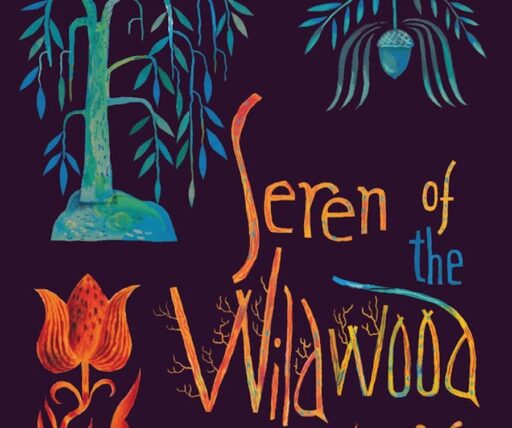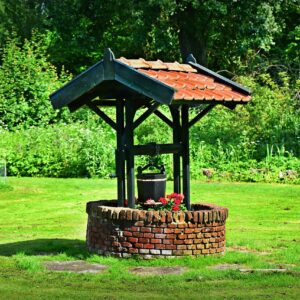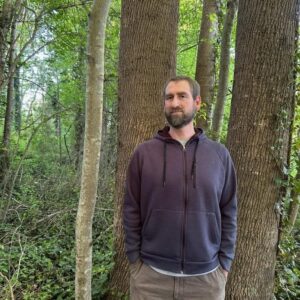One of the reasons I’m drawn to fantasy is that I believe it offers the deepest sense of place that art can express. The criterion of fantasy is geographical. Fantasy is that form of storytelling which engages with the world that in the West for almost the past thousand years has been called Faerie (variously spelled). Faerie both is and is not this Earth. It is the flipside of creation, perhaps the dark side. Because all things are palimpsest, because meaning is always a pointing elsewhere, because symbol is the bringing together of two, our Earth is doubled in Faerie. And so the fullest sense of place will be double as well.
But if I had to state the spirit of fantasy as a literary genre, its animating principle, I would invoke Tolkien’s idea of eucatastrophe. The definition of fantasy is that it involves Faerie, but the spirit of fantasy is that of the story which hinges on eucatastrophe, the sudden turn for the good which graces the audience with “a piercing glimpse of joy, and heart’s desire,” as Tolkien states in his essay “On Fairy-Stories” (by which title he means what I’ve just defined as fantasy: stories which pertain to the realm and denizens of Faerie). Eucatastrophe without Faerie is (realist) comedy; Faerie without eucatastrophe is horror. Faerie is a perilous place.
Marly Youmans, in Seren of the Wildwood, now available from Wiseblood Books, offers a vivid fantasy. I will call it that even though the word fantasy appears several times in the story in its meaning of something untrue, a hallucination or deceptive visionary experience. And well it might—although by the end we witness a wonderful transformation of the idea of fantasy—for deceptive visionary experience sets the plot in motion. An invisible creature whom the young girl Seren (Welsh for “star”) names Ariel lures her into the Wildwood, on whose border she lives with her parents. She had two older brothers, but they died just as Seren was born: it is suggested by the narrator a curse emanating from someone in the Wildwood sickened them.
What then ensues is a dream or vision-quest reminiscent of some quasi-allegorical early classics of the modern fantasy genre, like David Lindsay’s A Voyage to Arcturus or Hope Mirrlees’s Lud-in-the-Mist, or Lord Dunsany’s The King of Elfland’s Daughter, which is alluded to in Youmans’s story by the use of the phrase “beyond the fields we know,” the signature directions given for Elfland in Dunsany’s novel. There are other allusions to classical fairy-stories or fantasy, such as “East of the Sun and West of the Moon,” popularized by Andrew Lang in his Blue Fairy Book, and multiple references to the secret wisdom and mystery of fairy tales generally, and of the Wildwood, which is either Faerie itself, or a gateway thereto. This kind of intertextuality and self-awareness, which draws the reader into the sacred ambiance and social setting of storytelling (the opposite of immersive fiction), is a common feature of fantasy across all times and serves to distinguish the high mode of the art from a more naïve, more immersive and therefore purely entertaining lower mode.
Seren’s experience in the Wildwood begins horrifically, with her rape by the very creature she had presumed beneficent, Ariel. But thereafter she traverses a stunningly beautiful and extraordinary landscape and meets with other inhabitants of Faerie who are not threatening, and even sometimes nurturing and mentoring. She eventually gives birth to a monstrous child, Wilkin (two-thirds god, one-third human, a pedigree reminiscent of Gilgamesh and of the Nephilim of the Hebrew Scriptures), whom she strives, against his violent nature, to rear for seven years.
When one day Wilkin, already grown large as a man, runs off and drags Seren with him, he casts his mother aside, hurling her upon a thorny tree. This is another allusion to fantasy or visionary literature, in this case to the early Christian Old English poem, The Dream of the Rood. Seren is momentarily a Christ-like figure, crucified on this thorny tree. But when she comes down, she makes her way out of the Wildwood—it turns out Wilkin brought her to its edge—and back to her parents’ home, whereupon it transpires that to her parents Seren has been gone not seven years but only seven days. In other words, the story has been a kind of real or waking dream. This is a medieval convention, the most famous instance of which is the Middle English poem Pearl.
This brings me to a final point about Seren of the Wildwood: it is a poem; moreover, one whose prosody hearkens not to Pearl but to the other great Middle English poem by the same author, Gawain and the Green Knight, which like Youmans’s story traverses a wild landscape. There are sixty-two stanzas comprising twenty-one lines of blank verse appended by a bob-and-wheel. (The bob is the two-syllable line, the wheel the remaining four short lines.) Here is a complete stanza describing part of the glorious landscape of the Wildwood (more like that of Pearl than Gawain’s wilderness):
That day she happened on a shallow course
Of water running sibilant and quick
On stones long polished by the nudge of waves,
A road of agates, infinite as stars,
And beautiful to touch and contemplate,
The colors bright, submerged beneath a skin
Like glass, a river like a crystal snake.
Delighted by the hues and clarity,
She stripped away her clothes and cautiously
Lowered herself into the streaming waters
Until she lay against the riverbed,
Its jeweled chroma pressed against her flesh,
Her bones invigorated by the cold,
Her mass of hair a glory on the flow.
She added tears to the tributary flood,
Though hardly understanding why she wept,
And whether it was for the world’s loveliness
Or for her parents and the little graves,
Or treachery, betrayal, bitterness;
Perhaps it was for all these at once,
The intricate entanglement of life,
The way
A single tale’s a plait
Of many threads, the way
Hued agates may create
A rainbow, road, bouquet….
Here is another fine example of the bob-and-wheel:
Spellbound
And snared by loveliness,
She listened, looked, and found
A longing self’s not less
But more when lost in sound.
You might have noticed chroma in the blank verse portion above. That is one of several instances of interesting diction in Seren. Others I noticed include flensed, chert, and cant, the last a good Middle English word meaning angle, slope, or corner. Youmans’s command of the poetic form is masterful, and a superb choice for fantasy, invoking as it does one of the great medieval fantasists in English.
All true fantasy finally unites Earth and Faerie—or it might be better to say fantasy is an apocalypse of that primordial, coeval union. Because the creation is doubled, it is enchanted. At the end, even though to her parents her experience in the Wildwood was “but a fantasy,” Seren understands that
She might become a golden bowl of flame In an enchanted world—this one, a place Of paradise and hell and mundane hours, Where she could learn to make, to sing her tale And be a mistress of the marvelous…
Jonathan Geltner lives in Ann Arbor MI with his wife and two sons. His translation of Paul Claudel’s Five Great Odes is available from Angelico Press and a novel, Absolute Music, is available from Slant. If you enjoy his posts at Close Reading, check out his new Substack, Romance and Apocalypse, for more frequent and in-depth essays on the places where literature and other arts meet religious ideas and experience.





